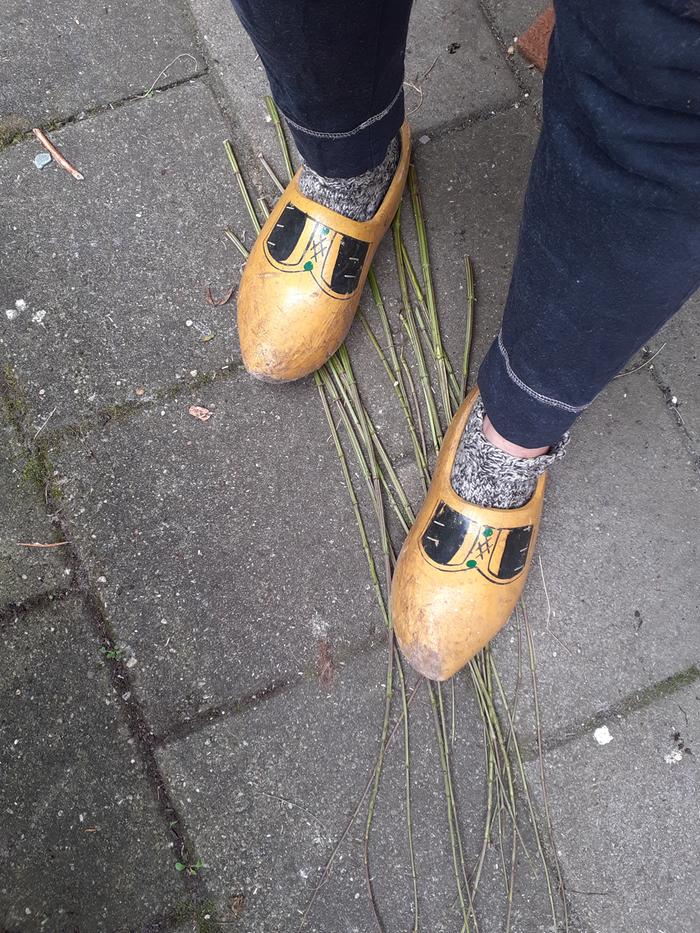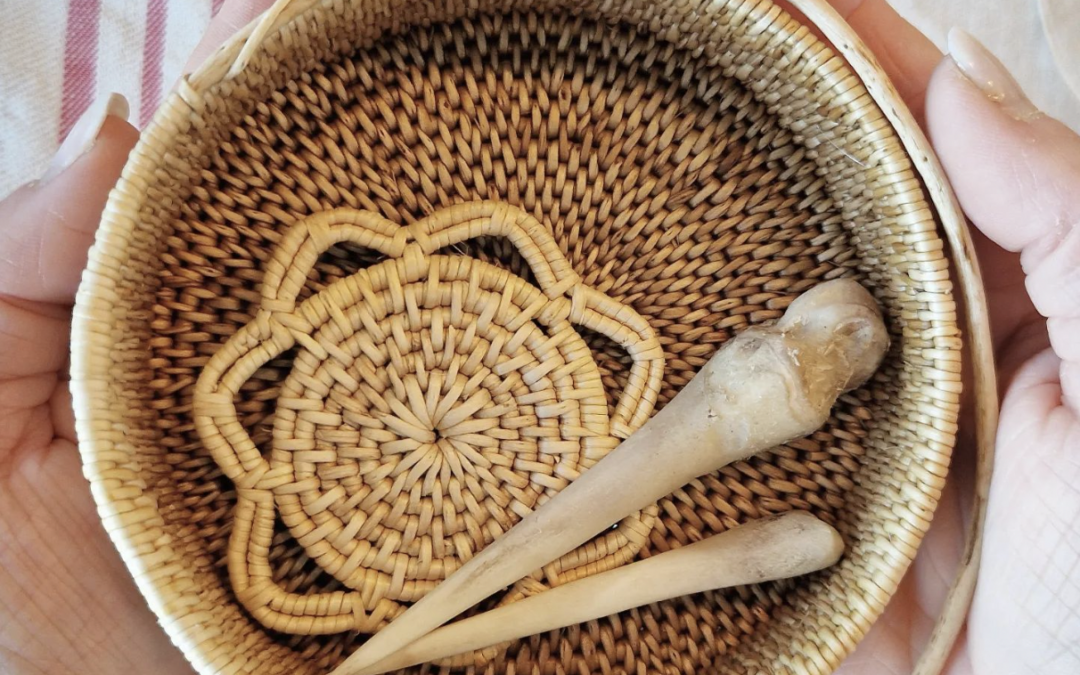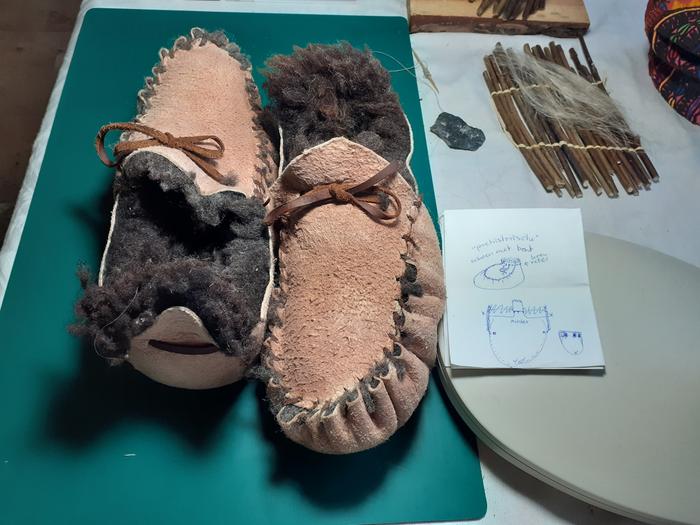posted 3 years ago
I may be sidetracked and obsessed again. I am from the PNW, western WA. It rains a lot here and I typically slog around in ankle deep mud for like 9 months out of the year. From 2010-2018 we lived on a little acre in Grays Harbor, WA and I began my self sufficiency journey in earnest. This was borne out of being broke.
So I purposed to learn skills because I saw and still see repeat bills or repeat things that need bought (in this case, shoes) as a thing that keeps us enslaved, in a way. When we constantly have to work outside the home to provide for things that we have to pay for over and over again... rinse and repeat...then we die. I get it that we gotta work for what we have a d we should. But you pay for things in time or money. Your money pays for somebody else's time. So do I wanna be spending my time working doing likely something I hate. Away from what I work for (home, family. Possessions. Animals.) And not get to enjoy it? Or do I learn to do things myself and spend more time where I actually want to be?
Secondly. I am a crafty kinda gal. Also borne out of being poor. And the quality of items just ...isn't...anymore. Most poor folks can afford Walmart type things. Which for me, literally...the shoes fall apart in days. I'm also a short, fat gal, and shoes either hurt like crazy bc they are made for some skinny footed Asian gal, or they just aren't the way I like them. I'm getting older. I get a bit picky about what I spend money on. Even in the spendier brands, over and over I find the same problems... Can't get the shoe wide enough, or the laces cinch down on the wrong part.of my foot and hurt or cut off circulation. Or there's some hard, spawn of satan, painful, plastic or metal piece in the sole that cripples me up after about an hour of walking on it. And I also like to support local economy first. We are fast losing "makers", because quite frankly China "makes" for pennies on the dollar and those things "made" often fall apart quickly. Forcing us to buy again. That makes me mad, actually. It's not about racism, it's about quality of workmanship.and supporting my neighbor's soccer kids vs communism and exploitation and excessive fossil fuel consumption and things made out of plastic.
But I digress. So I experimented with leather moccasins and tanning leather, wool slippers and moccasins. Denim moccasins. I found an Etsy person called shoeology.com that sells these rubber pieces you can put in the oven and then mold to your foot and the glue on with rubber cement. Makes a cool shoe but still not quite self sufficient. Moccasins had the same problem as someone already said here....mud and muck. But I got pretty good at, I think it was the Cherokee style? Side seem moccasins. The pucker toe was a bit much for me at the time. We were doing small livestock and occasionally would process a roadkill deer for the dog, so I learned to tan goat, sheep, and deer hide. As well as rabbits. I should say I'm still learning. Again, I'm trying to avoid chemicals and ordering things.
I made felted wool slippers and experimented with silicone, like caulking for a window bc it's what we had, on the sole of the slipper. That didn't hold up to wear more than a few months and looked pretty wierd. The moccasins I dearly loved, but I would walk holes in them. And could only wear them in summer months.
I also researched what I could what Natives wore here, because they had to wear something on their feet to stay dry, right? I found lime mentioned above ...mukluks. It's way too hot for a boot in Spring and Summer. I'm already dying in my rubber barn boots. But there's still mud on the farm. Who wears nice leather boots to much stalls? Not me, those things cost $100 bucks and they're one.of the few things I can wear to church that don't hurt my feet. I rub a homemade mix of pig lard from my pigs, and locally sourced beeswax into them to keep the water out and keep them supple. It does darken the leather, though.
So I have read somewhere that boots traditionally had a pig hide sole? This was because it was very tough (I can attest to that) and also resisted water. I have yet to try to tan a pig hide, bc we are pretty busy now.on our bigger land.
I have several salted, fur-on cow hides from our steers we had processed that are just sitting standing up in my craft room. As someone mentioned above, an animal hide that big is a JOB. I can't even lift a wet one and neither can my construction carpenter hubs. We have to roll it up on a bar and use the tractor. I can just barely lift the hide wet when I quarter it. And it's a gross, tedious job that takes days of back breaking work. 2 taxidermy places quoted me about $2,000 to do one hide. They said it is cheaper, unless I'm preserving a favorite animal, to order hides out.of Mexico for $200 each. That was pre-covid, mind you. So these hides just sit, so far.
So I am thankful especially, for the one post about what PNW Natives used. It's a step in the right direction to a puzzle solved. I'm sitting here drinking my coffee, thinking about all the things I don't have the time to do. I've come to the conclusion that homesteaders were home skinny and died earlier because they worked their tails off for everything they had. Lol. But how many instances of depression, "consumption", cancer, heart disease, high blood pressure, etc did you see back then?
Today we are so "advanced". We waste away our lives on a screen (like I'm doing now, haha) and wonder where our lives went, why things suddenly cost so much, and why our children won't come to visit us. Taking a handful of pills a day for our various ailments.
If I can find pics of my various.mistakes, I will post them. And now that I have learned the game changer of using a torch (sigh ...more fossil fuels....) to get the long boar bristle hair off a pog, I may try my hand at tanning one of their hides. If the lard content is any indication.... the stuff.is an EXCELLENT remedy for rough "farm hands", and has done good things for my boots. I haven't seen it go rancid in a year in warm.weather when mixed with beeswax (I make various oil infusions and salves with it). Kept in the freezer/fridge and rotated stock deals with that problem..
Any recommendations.on a detailed, step by step instruction book for brain tanning and/or natural leather care? I have been pulling from YouTube videos and articles, but I want to know how it was done before we had bran and how the Natives did it and how they kept it in condition. I now have two horses and would like to maybe make them some tack and don't know whether to use rawhide or what exact condition of tanning from the salted hide that rawhide is....is a salted, worked, and oiled hide...done? Does it mold? Bc some of my hides in storage molded with our wet air.
I started with 3 strips of hide I cut off my salted hides to make a halter/hackamore/bridle for my mare...wetted them, worked them over a 2 by 4 end until the fibers were all white and nearly dry and pliable. After they dried, they still went back to the rigid, shrivelled up state, so maybe addi ng oil at that point was what I was supposed to do. But I had to stop and get back to work. Sundays are my "screw off" days. Usually when my health issues force me to stay settin' and close to the house. Then is when I do these things. Little projects, bc it's hard to stick with it when it's big. So I will be weaving little baskets out of our swamp grass (juncus), or fiddling with some of my leather, or whatever.
My coffee is gone, so I better shut up now. The hides are staring at me from the corner of my craft room (I am so blessed, now... big farm house. 13 acres). Have to go buy horse feed today and soak my draft's abscessed foot. Sigh ...$400 for a saddle finally and he comes up lame...Facepalm... Gotta go feed all the creatures and sell my firstborn child to fill up my gas tank.
Thanks for listening to my rambles. This site makes my creative brain go nuts.






 3
3








 8
8




 4
4




 11
11




 4
4




 3
3




 5
5




 2
2




 10
10






 5
5





 9
9





 5
5










 5
5










 3
3




 3
3




 4
4




![Filename: alpargata.png
Description: [Thumbnail for alpargata.png]](/t/31817/a/253281/alpargata.png)
 3
3










 8
8






 6
6




 7
7




 6
6




 8
8










 6
6











 5
5












